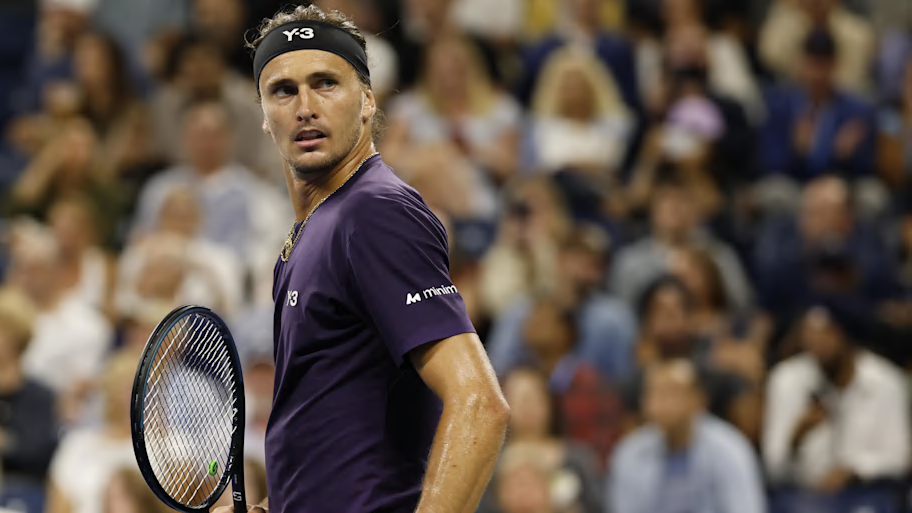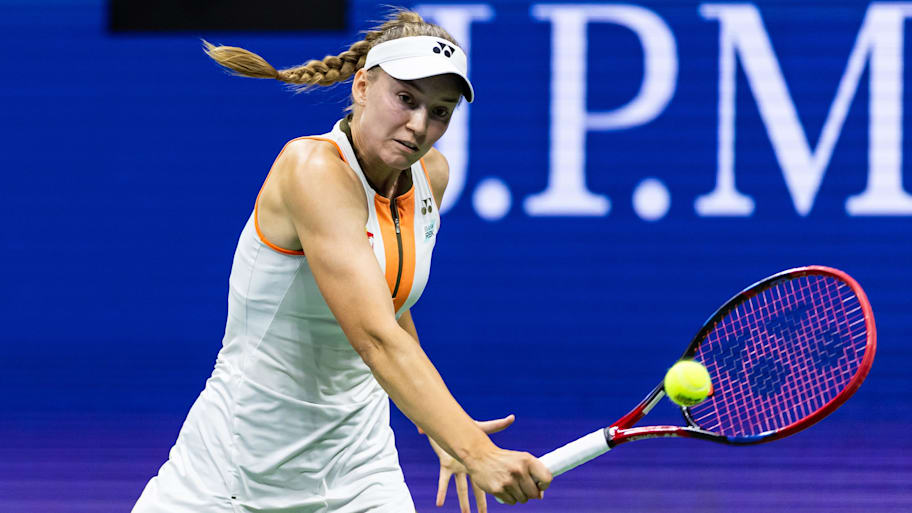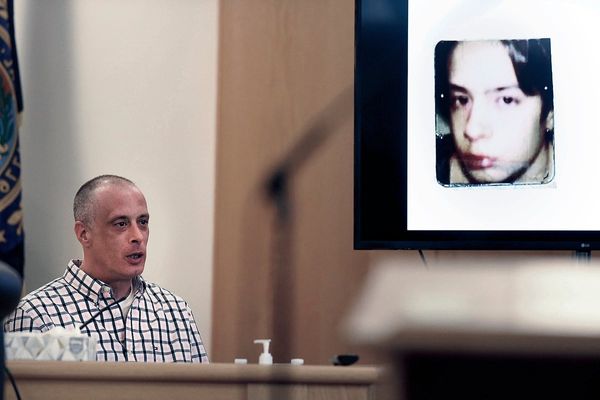
Submissions have been lightly edited for brevity and clarity.
Hey everyone …
• Here is this week’s Served podcast
• Congrats to Roger Federer, who was elected to the International Tennis Hall of Fame in his first year of eligibility. And to Mary Carillo, who was elected in the contributor category.
• Congrats, Eric Butorac, who was named the new U.S. Open tournament director. Once you’ve dealt with player agents and scheduling demands, confronting Steve Cohen is no longer so daunting.
• More congrats, Chris Eubanks, who doesn’t want to use the word “retire,” but is putting his playing career on hold to tend to his ascending broadcast career.
• Still more congrats, meet Mimi Fotopoulos, Tennis Channel epoxy.
• Back to the USTA. It’s a bit hard to follow, but the USTA appears to be on the winning side of the dispute over a Citi Field casino bid. (One irony here: Lewis Sherr, the Mets’ president of business operations, is the former USTA CEO.)
• This week’s unsolicited book recommendation: Blue Power by Reg Lansberry.
Onward …
Jon, I’m having trouble making up my mind here and maybe you can help me. Is men’s tennis in a good place with such an awesome rivalry? Is men’s tennis in a bad place because there are two players who are so much better than anyone and it’s hard to care too much about tournaments because we’re all waiting for the final?
Natalie
• It goes without saying that this is a reference to Jannik Sinner and Carlos Alcaraz, who met in yet another final on Sunday. Sinner won 7–6, 7–5 to take the ATP Finals title in Turin.
Especially in an individual sport, rivalries are essential. And coming off the gilded age of Roger Federer, Rafael Nadal and Novak Djokovic, stars were necessary. Men’s tennis has both, and for that, we ought to be thankful.
Andy Roddick and I talked about this rivalry with Chris Eubanks on Served. Here are two players with contrasting styles, batting results back and forth as in a rally. (Alcaraz leads the head-to-head 10–6, but they split the 3,302 points they have played 1651–1651.) They are willing to go down to the shed in the basement and tinker with their games to gain an incremental edge. They genuinely seem to like each other. Advantage, tennis.
Your question, though, is valid. Does the sport suffer from predictability? For the fact that they are (see below) so wildly ahead of the field that there are few other stars, and the rounds before the final are bleached of drama because often it’s all just a prelude before the inevitable No. 1 vs. No. 2 final? Yes. Ideally, you have a rivalry at the top, but also disruptors (see: Djokovic in 2011), determined to play antitrust lawyer and break up the monopoly. A segue to …

[Alexander] Zverev lost today, so his season is over. He’s the world No. 3, currently with 5,160 ATP points. Sinner is No. 2, with [11,500], more than double Zverev. Which means in terms of points, Zverev is closer to you and me in the ATP rankings than he is to Sinner and Alcaraz.
Kevin M.
Redwood City, CA
• This isn’t a question per se, but what a stat.
One of you asked: If Alcaraz and Sinner are clearly the two best players in the men’s game, who would you say is the third best?
Zverev has it, of course, based on math. However, ever since he lost in that Australian Open final, he has neither looked nor played like a player worthy of his No. 3 ranking. And he acknowledges as much. Say what you will about the guy, he is a sports realist. He knows better than anyone that you can’t advance to the quarterfinals, first round and third round, respectively, in the last three majors of a season and credibly claim that you are the third-best player on the planet. He himself categorized his 2025 season as “incredibly unsatisfying.”
Over the past 90 days, the answer would be Félix Auger-Aliassime. He’s been gangbusters since August. The problem, of course, is that the year starts in January (as years tend to) and Auger-Aliassime was grounded for much of the first eight months. Consider: He won two matches combined at the first three majors, went 5–5 at the first five Masters 1000s and, even after a decent Cincinnati run, was barely seeded at the U.S. Open.
My vote? There’s a guy who didn’t play a ton. But he did reach the semifinals at each of the four majors. And won a pair of small titles as well. Djokovic is the name.
Here’s a wild one: Heading into Turin—which Djokovic, of course, didn’t play—he was third in prize money, despite his highly abbreviated schedule, which tends to be a good barometer of success, as the most meaningful results pay the most.
Here’s a less wild point, and more sentiment than data: If Sinner and Alcaraz were able to eliminate one name from the draw before the event began, which player would it be? I suspect they would both take Djokovic.
Jon, biggest surprise of 2025 … Victoria Mboko, João Fonseca, Learner Tien, Valentin Vacherot. Other.
Todd S.
• Interesting question. Mboko was ranked outside the top 300 to start the year. She won 60 matches (at all levels; it would be nice if the WTA website differentiated tour events from challengers) and, of course, won Montreal in dramatic fashion. After a mini-slump—primarily due to a wrist injury—she recovered and won the Hong Kong title to close out the season, finishing the year ranked No.18.
Tien was a revelation, no doubt. He had won a lot in 2024 at the challenger level. What he lacks in weaponry, he makes up for in craft, speed and mental toughness. (Bonus: He’s a sneaky-fun watch.) He lost to Fonseca in the 2023 U.S. Open boys’ final—another reminder of why you should watch junior tennis at majors—and it’s easy to see how. Fonseca is still growing into his game and body. He’s still learning to construct points and back up one win with another. But there is so much easy power off the ground and so much to like. (At this writing, Fonseca is No. 24 and Tien is No. 28.)
If we take surprise to mean shock value and statistically anomalous, you have to go with Valentin Vacherot. A few years ago, he wasn’t eligible for qualifying draws. He qualified for Shanghai and then went on to win the tournament, beating Djokovic in the semifinals and then (wait for it) his first cousin, Arthur Rinderknech, in the final. But wait …
In his next event, he played Taylor Fritz 7–5 in the deciding set in the Round of 32 at Basel. After that, in Paris, he won three matches (including another win over his cousin) to reach the quarterfinals. And now he will likely be seeded at the Australian Open.

Hi Jon
I'm a huge Elena Rybakina fan so I’m overjoyed by her late year surge. But has a top player ever been as shaky the closer she moves to the net? For all her opponents, other than the few who have ways to combat her power, I think it's professional malpractice to not slice or float or block every ball to her backhand, to about the service line—a bad drop shot will do—and play from there. Or for the pros and their coaches would that be too Shaq-at-the-foul-line-shooting-underhanded?
Am I being too harsh on everyone involved?
Alistair W, Toronto
• I would say your point is well-taken, but you’re being too harsh by an order of magnitude. Is she the slickest mover out there? No. Does she have the softest hands? No. But a bad drop shot? She’ll feast on those. Rybakina has such power off both wings, I’d be wary of feeding her short balls as a strategy. Also, you inspired me to look up some of her stats. When she comes in, she closes at an acceptable rate. Which either means she’s better at the net than given credit for, or she picks her approaches judiciously.
Hi Jon,
I agree with you that Serena’s serve was quite probably the most fearsome weapon in tennis, all time and across gender. I wonder if the passing shots and return game of peak Monica Seles may be a runner-up or maybe top five? From 1991 to 1993 she broke her opponent approx 50% of the time […] Or maybe I’m just being nostalgic.
Mark A.
• You are not. That’s a great point. Monica Seles was not just a dominant and indomitable force; she succeeded more because of her return game than her service game.
There’s a longer essay here for another time. Still, I always thought of one of the additional cruelties of her situation: The trauma makes her (understandably, of course) reluctant to revisit her career more than necessary. Had her career been cut short by, say, a wrist injury, it would have been unfortunate. Tragic, even. But, years later, it would not have made a discussion of her career so delicate and painful. I wonder if we don’t, collectively, shortchange her achievements and neglect to discuss how good she was because there’s so much discomfiting about it all to her, and therefore to us.
Shots
• The ATP announced the renewal of its global partnership with Yokohama Tyres.
• The Cincinnati Open announced its singles finals will return to being played on the event’s closing Sunday, which will fall on Aug. 23.
“We feel strongly that a Sunday final will deliver the best tournament experience.” said tournament director Bob Moran. “We appreciate the ATP and WTA Tours working with us to make this change, which will benefit our attendees, partners, players and global broadcast audience.”
• The ATP and Nitto Denko Corporation announced a multi-year extension of their partnership.
More Tennis on Sports Illustrated
This article was originally published on www.si.com as Tennis Mailbag: Who Can Contend With Jannik Sinner and Carlos Alcaraz?.







